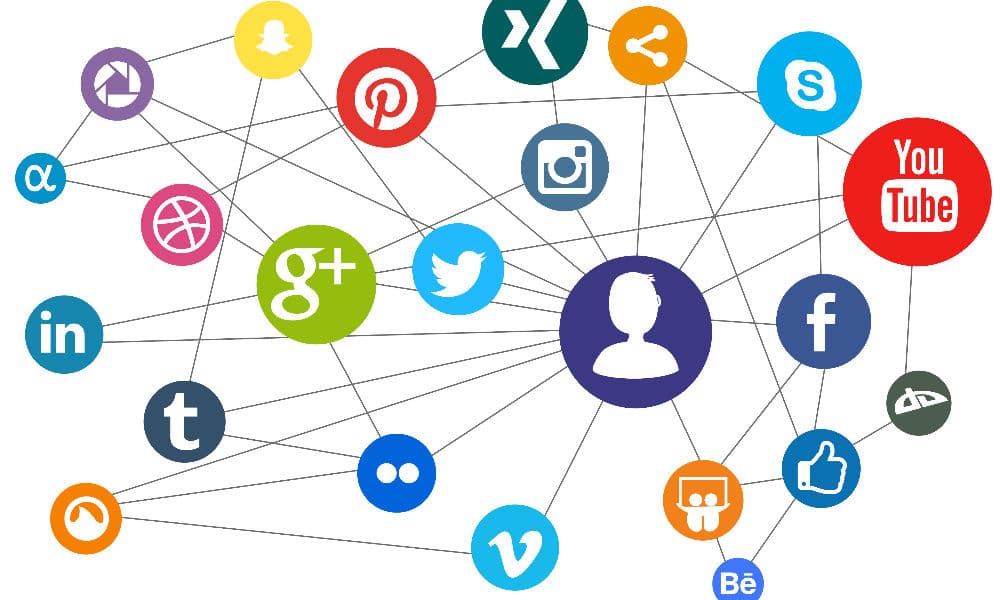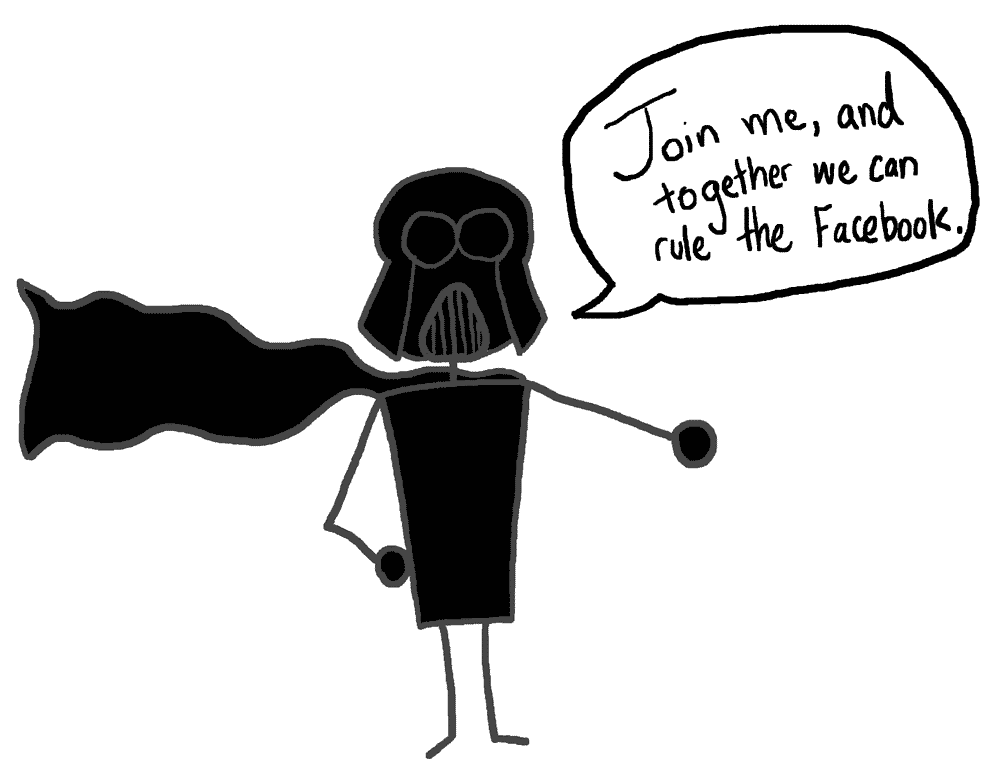imaginarylava.org

Nowadays it’s not about which social media networks are the most popular but about which social media networks are the best for YOUR business and niche.
Social media has infiltrated our lives. It has become the ’brand building’ prodigy tool so don’t waste your time wondering if it’s just a buzzword or a passing marketing phase. As statistics show, it’s the most influential tool you have to increase your visibility in this chaotic virtual life of opportunities.
But, as a general rule, a simple know-how isn’t enough. You need to showcase that certain ’je ne sais quoi’ that makes you stand out.
Here are 39 amazing tips on how to choose a social media strategy that is relevant to your needs and will ultimately benefit your business.
1. Choosing the right social media platform
The giants in the social media world like Facebook, Instagram, and Tumblr can contain the entire population of China on Facebook alone, while the other two have a platform of users as large as the entire USA. YouTube is popular among a very wide variety of people and is one of the top social media sites, with video as a key component, and the second largest search engine behind Google. Different platforms serve different needs and different demographic groups.
2. Facebook
Facebook is a great tool to reach a large number of people very quickly. The fact that it offers different channels of communication (messages, comments, and even emoji reactions) makes it very attractive for different business models and various age groups.
3. Twitter
Twitter marketing is unique because of all the ways it can be adjusted to its users (marketers or audience). Twitter users have more control over the posts they want to see, so you are more likely to increase customer loyalty on this social network. There is also a number of marketing tools (like Twitter Advanced Search or Tweet Reach) that can help you shape your tweets in the best way possible.
4. Tumblr
Tumblr is a social platform that can be of the utmost importance for your business marketing if you want to show off your creative side. First of all, you are more likely to get a great response if you have a fun, catchy name. The Tumblr audience is mostly made of young people, so you have to focus on hip, humorous content.
5. Google+
One of the most underestimated social networks was certainly Google Plus. But, nowadays it is mostly dead. Stay away.
6. Snapchat
Although this platform is still somewhat new to the business world, there is a staggering amount of evidence it could become huge. The companies who have tried it have claimed it can be a very powerful tool for sharing promo codes (because of the high percentage of engagement), sharing short low-cost videos, and engaging influencers.
7. LinkedIn
LinkedIn is generally considered to be the most professional of all the social media platforms. It can be quite useful with the combination of a professional, active community, and the ability to precisely target messages which attracts a very high response rate. However, it has a lot of shortcomings unless you are a premium member.
8. YouTube
YouTube is another great tool for online marketing mostly thanks to its massive traffic and viewers (around 1,325,000,000 people are using it and over 300 hours of video is uploaded daily). With this kind of reach and almost limitless opportunities for presenting your content, it is a must.
9. Pinterest
Although Pinterest is still relatively new to the business world, it offers a lot of potential. Namely, Pinterest pins are 100 times more spreadable than a tweet and, compared to Facebook, the life of a pin is 160,00 times longer than a Facebook post.
10. Using more than one social media platform
As we have already mentioned it is recommended to use more than one social media platform in order to get in touch with a wider audience and different demographics. Your choice of social media determines your visibility.
11. A social media marketing plan
You should have a social media marketing strategy for every channel you use. If you have a good strategy, you will be able to control your resources and time. Yes, being in the right place at the right time is as important as it is in real life. When creating a plan don’t forget the character limit for each social media platform, outline how often you want to post, and the type of content you want to publish.
12. Tell me what your niche is and I’ ll tell you which platform to use
LinkedIn and Twitter reach a more professional audience. LinkedIn can be your top choice if your business requires network connectivity in corporate business, whereas Facebook has a mix of casual and professional audiences. Instagram is perfect for social influencers that focus on creative, visual content.
13. So, who are you?
It’s 2018. So the best social brand you can invent is based on who you really are, your unique way of seeing life and the people around you. Tell people how or why you do what you do. We all like a story behind the brand. After all, we are just a bunch of dreamers.
14. Showcase your uniqueness
If you’re starting your own personal brand, start with a blog. Deliver value, be consistent. Create a variety of formats including videos, podcasts, infographics, and more. It makes you more accessible to customers. Find a way to convey what you stand for through social media .
15. Being loyal
Becoming friends with your potential customer is a special relationship based on trust. And every new post, image, video, comment represents a chance for them to visit your site, and every visit is a potential conversion. The more followers you have the more trust you gain.
16. Humans have feelings
In social media, brand channels need to be humanized. People prefer doing business with other people rather than companies.
17. Appreciate the feedback
Be heard, but let your customers and followers reach out as well. Whether they are congratulating or criticizing, take their feedback into account and listen carefully. You will certainly learn a lot and be able to filter your posts more efficiently.
18. Be active
Another important thing on social media is the relationship between you and your target audience. Be as responsive to their messages and comments as possible. People rely on social media to obtain information and they will appreciate your effort.
19. It’s all about interaction
Interacting with customers is a sign of good faith for other customers. When people complain or praise you, they turn to social media. So when they post your name, they will want to follow you for updates. The more people talk about you on social media, the more you will be appealing to new users. If you interact with major influencers, you will definitely be adored. Without social media you are limited to people you already know.
20. Spare no expense
When it comes to investing in marketing, do not ever be shortsighted! It may sound like an extravagant expense now, but it will definitely be worthwhile in the future. Paying for a sponsored ad or a premium membership can offer you a lot of features others don’t have and can put you ahead immediately!
21. Use social media management tools
There are some social media management tools that can make the process much easier and save you precious time, such as
Hootsuite,
Buffer, and
Hubspot. Leverage these tools to save you time and expand your reach.
22. Scheduling tools
With the help of social media scheduling tools, marketers can use different platforms more efficiently. There are a lot of scheduling applications and most of them have a free trial period, so you can try a couple of them and opt for the one you like the most.
23. Analytics tools
Like scheduling tools, analytics tools can make marketers’ lives a lot easier. By gathering details about the most efficient practices or target demographics for example, you can improve your marketing strategy.
24. Writing tools
Writing tools can not only improve the quality of your content, but can also make your content more appropriate for the specific social media platforms and your target audience. Here’s a great list of
writing tools.
25. Make it mobile-friendly
When it comes to the content you post, it is very important for it to be accessible from mobile devices. People are using their phones everywhere, all the time, so it is more likely they will view your posts on the go. Do not give them a reason to skip your content.
26. SEO
The top positions on Google search are not easily achieved without a key SEO (Search Engine Optimization) strategy in place.
27. Keywords
Choose keywords that you want people to associate with your brand, use them as often as possible – in your mission statement, in your content, in your elevator pitch – so that people can find you when they search for those words.
28. Hire a professional
The modern labor market offers a professional for virtually any field of practice. Social media managers are also numerous and affordable. They will definitely save you a lot of time, make your social media campaigns more efficient, and save you money in the long run.
29. Follow in others’ footsteps
Research and shape your social media strategy after other well-established brands. You can see what kind of content they post on different platforms, what their target audience is for which products, etc. Keep an eye on them, always!
30. Team up!
Sometimes, it can be really useful to join forces with another company. Co-promotion is an amazing way to increase your visibility on many social media platforms and reach a larger number of potential customers. It will also show that you respect your rivals.
31. Build your tribe
Social media platforms are the perfect place to stay tuned with those who you really see as a part of your tribe. Make a choice – you cannot appeal to everybody and vice versa.
32. Who are my followers?
Get an insight into what your customers do, how they live, what they want more than anything else, what angers them, what makes them happy, what are the experiences they will remember.
33. Use images and graphics
Attach images and graphics to your text content. There are many sites that offer free photos. GIFs (Graphics Interchange Format) are animated posts and are great for capturing attention and making your content more share-worthy.
GIPHY is a great resource of GIFs or you can even create your own. Twitter has a built-in button you can attach to your tweets.
34. People love videos
What can be more involving than watching your friends or your fans in real life? Or seeing your story come to life as a captivating animation? It’s all about motion!
35. Live videos – in real time
The only thing more captivating than watching video is watching live streaming. Twitter and Facebook offer easy live-streaming platforms that can quickly grab attention and followers
36. Hashtags
The # converts the word into a link that makes it easy to find and follow a conversation about that topic.
37. Captions, mentions, filters
The majority of posts on networks like Instagram and Snapchat start with an image or video, which users can decide to add content to like captions, mentions (@username), filters and more. It’s a great place to use your creativity. Think out of the box.
38. Don’t think too much
Just as in real life, people also like spontaneity on social media. Do not be afraid to be silly. Your audience will appreciate your fun side and become even more loyal. But then again, don’t overdo it, you are still a professional!
39. Have fun
Show your followers that you are not just a hardworking creature who only cares about business. Show them how you know how to enjoy yourself, how to love life, therefore inviting them to be a part of your living adventure in all aspects. And they’ll return the favor.
Once you have your social media strategy all figured out, you will certainly see results. But, of course, you will not become the most popular brand overnight.
Be patient, listen to your customers, appreciate the advice from established companies, and follow your instinct. And last, but not least, enjoy yourself and let that come through in everything you share!
























